Resolutions Adopted by the 104th Session of the Maritime Safety Committee (MSC 104)(Part 1): Amendments to The Protocol Of 1988 Relating to The International Convention on Load Lines, 1966 (1988 Load Lines Protocol)
For this fourth article in the series (ie IMSML Website Article 4/2022), the author is looking a little further back in time at the very first 2022 Malaysia Shipping Notice (MSN 001/2022). This was issued by the Director General of Marine of the Marine Department Malaysia on 12 January 2022. If you have read the previous three articles, you would be aware that the theme of the first three website articles No.1/2022 to No.3/2022, dealt specifically with the 'environmental' impacts of shipping. By contrast , the calendar year for Malaysia Shipping Notices actually kicked off with ‘safety as the theme.
This very first Malaysian Shipping Notice MSN 001/2022 is titled ‘Resolutions Adopted by the 104th Session of the Maritime Safety Committee (MSC 104)’, these Malaysia Shipping Notices are perfect content for an organisation like IMSML to feature as website articles as the notices are described as ‘Notice to shipowners, ship managers, ship agents, Masters, seafarers, port operators, Recognized Organizations and the maritime industry’, ie all stakeholders who are welcomed with open arms by IMSML.
Now on to MSN 001/2022. There are 4 components to this Shipping Notice. First, Resolution MSC.491(104) for Amendments to The Protocol Of 1988 Relating to The International Convention on Load Lines, 1966 (1988 Load Lines Protocol). Second, Resolution MSC.492(104) for Amendments to The International Code for The Construction and Equipment of Ships Carrying Liquefied Gases in Bulk (IGC Code). Third, Resolution MSC.493(104) for Amendments to The Performance Standards for Shipborne Simplified Voyage Data Recorders (S-VDRs) (Resolution MSC.163(78), as Amended). Fourth, Resolution MSC.494(104) for Amendments to The Performance Standards for Shipborne Voyage Data Recorders (VDRs) (Resolution MSC.333(90)).
The International Convention on Load Lines, 1966 (1988 Load Lines Protocol)
For the first component of the notice, the focus of MSC.491(104), which was adopted on 8 October 2021, hinged on water tight doors on ships (note, bad pun intended). The Maritime Safety Committee (MSC) looked at existing regulatory frameworks for water tight doors across various regimes such as the Safety of Life at Sea Convention (SOLAS)(see https://www.imo.org/en/KnowledgeCentre/ConferencesMeetings/Pages/SOLAS.aspx accessed on 23 September 2022), the International Convention for the Prevention of Pollution from Ships (MARPOL)(see https://www.imo.org/en/About/Conventions/Pages/International-Convention-for-the-Prevention-of-Pollution-from-Ships-(MARPOL).aspx accessed on 23 September 2022) and the International Convention on Load Lines (the Load Line Conventions)(see https://www.imo.org/en/About/Conventions/Pages/International-Convention-on-Load-Lines.aspx accessed on 23 September 2022). The aim is therefore harmonisation of water tight requirements even though this concept can be found in more than one place.
At this moment in time, Resolution MSC.491(104) by the MSC is not yet in force. The amendments will only come into force on 1 January 2024. That leaves the shipping industry in Malaysia slightly more than a year to adjust and get into shape for compliance. Both new and existing ships will have to comply with the new amendments on the designated date.
The change, albeit minor, is found in a new Regulation 27, Chapter III (Freeboards) in 1988 Protocol Amendments Relating to the International Convention on Load Lines 1966. It concerns watertight doors on cargo vessels. If one reads the new Regulation 27, there are some ‘interesting’ (at least to a land loving person like me) features.
First, it recognises the operational reality that flooding (ie progressive downflooding) can take place on a watertight ship through air pipes, ventilators, hatch covers etc. Note that this is the flooding of compartments that are watertight and would prevent further flooding of the ship. https://www.marineinsight.com/naval-architecture/ship-stability-damaged-stability-ships/ (accessed on 27 September 2022).
Second both sliding watertight doors and hinged watertight doors, when used, should be indicated locally (at the place where the door is found) and also remotely at the bridge. Third, these doors can be quick action, or single action. Fourth, if used to separate main machinery space from a steering gear compartment, watertight doors should be hinged, quick acting, and kept closed when not in use. Fifth, in an exception to the previous point, the requirement will not apply where the lower sill of the watertight doors is above the summer loadline.
If you are interested in knowing more about loadlines, this is an excellent introductory resource: https://www.marineinsight.com/marine-navigation/introduction-ship-load-lines/ (accessed on 27 September 2022).
Stay tuned for the next IMSML Website Article 5/2022:
Resolutions Adopted by the 104th Session of the Maritime Safety Committee (MSC 104)(Part 2): Amendments to the International Code for the Construction and Equipment of Ships Carrying Liquefied Gases in Bulk (IGC Code)
Signing-off for today,
Dr Irwin Ooi Ui Joo, LL.B(Hons.); LL.M (Cardiff); Ph.D (Cardiff); CMILT
Professor of Maritime and Transport Law
Head of the Centre for Advocacy and Dispute Resolution
Faculty of Law
Universiti Teknologi MARA Shah Alam
Selangor, Malaysia
Monday, 3 October 2022
Note that I am the corresponding author for the IMSML Website Articles. My official email address is: uijoo310@uitm.edu.my
Edited by Wan Hilwanie Ariff, President, IMSML
